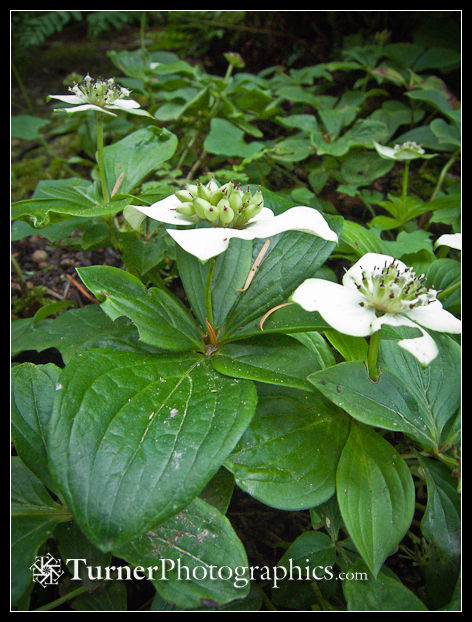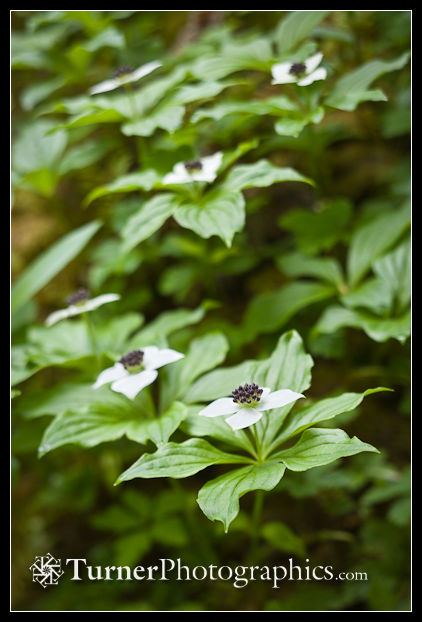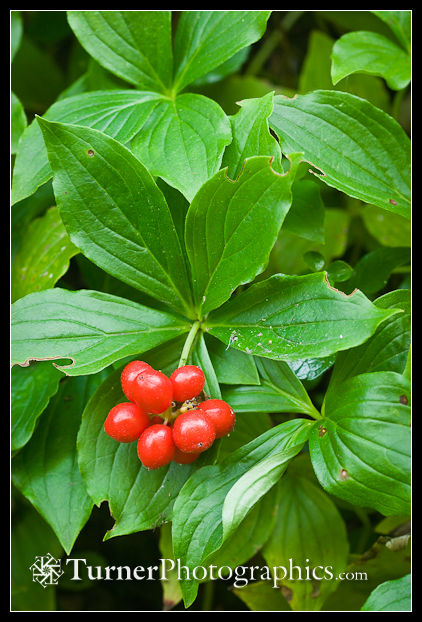Plant of the Month: Bunchberry
When you think of dogwood, do you think of a tree or a groundcover? If you only think about dogwood trees, you’ve been missing out on one of my favorite woodland wildflowers. The smallest of our dogwoods is commonly called Bunchberry or Dwarf Dogwood. There are two species in the most populated parts of North America, Cornus canadensis and Cornus unalaschkensis. Some taxonomists lump them together and in the nursery trade it’s almost always sold as Cornus canadensis.

Like the tree dogwoods, the white petal-like structures are actually showy bracts. The real flowers are numerous and tiny, surrounded by the bracts we notice and think of as dogwood “flowers.”

Bunchberry is native all across the northern part of North America, from Oregon to Virginia and everything north.
It grows in forest openings and margins in rich soil comprised in large part of decaying wood. I’ve seen it on rotting stumps, nurse logs, and in moss-covered duff on the forest floor. It likes a moist, but not boggy habitat, and thrives in mostly shady areas that get some sun or sky light during the day. When planting Bunchberry in your garden, give it similar conditions. In our own garden, it has spread into a bark path, where it is much happier than in the adjacent shade bed that doesn’t have much decaying woody material.

Bunchberry blooms in late spring or early summer. As I write this around the first of June it’s in full bloom at lower elevations in western Washington. The white bracts remain showy and attractive long after the individual flowers themselves fade.
You’ll often find Bunchberry growing in dense patches, where it lights up an otherwise dark forest floor.
Bunchberry leaves grow in whorls, meaning they’re evenly spaced around the stem, and held parallel to the ground. Plants with six leaves will generally flower; those with only four leaves usually won’t.

In late summer bright red clusters of berries ripen and provide food for songbirds and small mammals. Although I haven’t tried them myself, the berries are reported to be sweet, but pulpy.
There are more photos of Bunchberry on my Pacific Northwest Wildflowers website.

